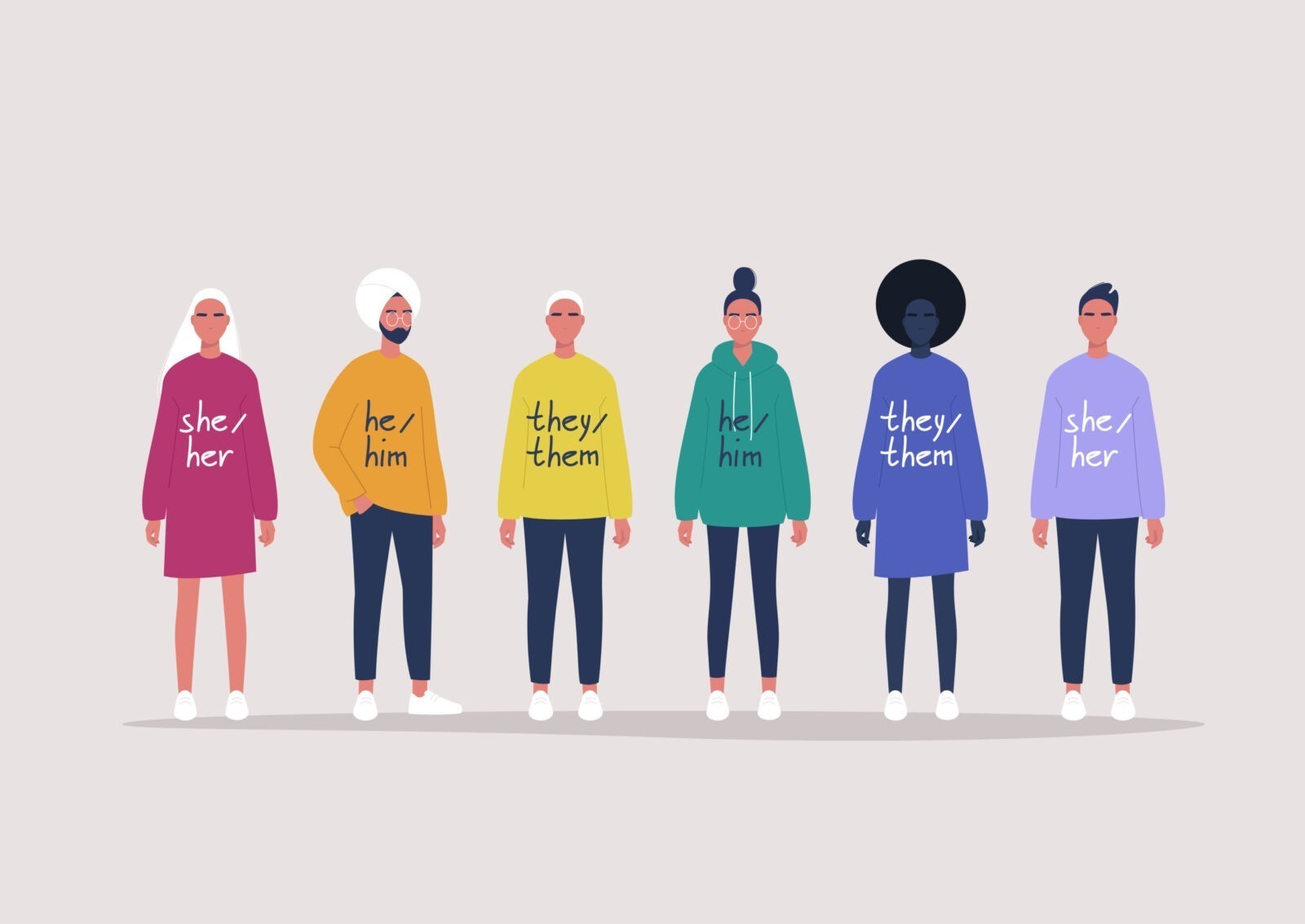Why gender-inclusive translations are so important

The issue of gender identity is more prominent than ever. As more people are rejecting traditional gender roles and identities, languages are evolving to keep track of these new forms of self-expression. These changes in language are also helping to break down some of the more tenacious gender-based stereotypes. What part do gender-inclusive translations play in this process?
My pronouns are…
Personal pronouns are one of the most fundamental tools for expressing our identity. The pronouns you choose determine not only how people address you, but also how they see you as a person. Gender-inclusive translations take account of this vital information. The UN’s guidelines for gender-inclusive language in English distinguish between ‘grammatical gender’, ‘gender as a social construct’ (the behaviours associated with men or women by society) and ‘biological sex’. Different languages handle personal pronouns in different ways.
The main distinction is between gender-specific languages and gender-neutral ones. Gender-specific languages have different pronouns for masculine, feminine and neutral genders, such as German, with its ‘er’, ‘sie’ and ‘es’. Gender-neutral languages use the same pronoun for all genders; the Armenian ‘նա’ (na) is used for both ‘he’ and ‘she’. Mandarin takes a bit of a hybrid approach: its third-person singular pronoun is pronounced ‘tā’ but written differently depending on whether the subject is a woman (她), a man (他), an animal (牠) or even a deity (祂). The inclusive, gender-neutral alternative is X也 or 无也.
In English, the historical approach to this has been the so-called ‘singular they’: ‘A guest left their bag behind after the concert.’ The modern emergence of neopronouns such as ‘iel’ (for ‘il’ + ‘elle’) in French has added another dimension to the debate. Whether these pronouns are appropriated for your translation will depend on the tone of voice and the topic of your article, as they have not yet been formally accepted by dictionaries.
The search for a happy ending
Of course, if the adjectives in your language have different endings depending on the gender of the noun, you will need a gender-inclusive solution to this as well. This issue is proving controversial for languages like Spanish and Italian. People of Latin American heritage, traditionally Latinos and Latinas, saw the alternative ‘Latinx’ emerge in around 2004. Spanish grammar purists rejected the term and proposed ‘Latine’ instead. In Italian, adjective endings work like this:
| Masculine singular | Masculine plural | Feminine singular | Feminine plural |
| -o Un viaggio lungo (A long trip) | -i Alcuni gatti (Some cats) | -a Una buona scuola (A good school) | -e Le case nuove (The new houses) |
This means that the only ‘free’ vowel that could be used instead is ‘u’…except -u is used for masculine singular nouns in the south of Italy. Linguist Vera Gheno has proposed the schwa (‘ǝ’) or the long schwa (‘з’) as alternatives.
Same profession, different name
Gender-inclusive language does not stop at pronouns. The names of a sizeable handful of professions have gender hard-coded into them: fireman, policeman, midwife, stuntman, stewardess, salesman and so on. A feminine equivalent does now exist for some of these professions (‘saleswoman’ has caught on, although ‘firewoman’ has not). A better solution however, is to use a gender-neutral term: police officer, sales representative, chairperson.
The French word for ‘author’ has also been the subject of debate when it comes to finding a form that is not limited to the masculine. The feminine equivalent most commonly used is ‘auteure’, but this is irregular (since nouns ending in -teur usually take -teuse or -trice in the feminine). ‘Autrice’ is also used, albeit more rarely. The Académie Française recommends leaving it as ‘auteur’ in the feminine because of the unique and largely abstract notion of what being an author means. Fortunately, there is a gender-inclusive alternative here as well, if we make use of French’s rules for inclusive language: ‘écrivain∙e’. German has its own variety of solutions for gendering words inclusively. Some people use an asterisk instead of a dot (‘Schweizer und Schweizerinnen’ becomes ‘Schweizer*innen’); others give the feminine ending an initial capital letter (‘BürgerInnen’). Some people prefer to put the feminine before the masculine (‘Teilnehmerinnen und Teilnehmer’).
The implications for translation
Inclusive language is only one part of the broader question of finding the right tone of voice. It is very important for the client and the translation agency to discuss in advance how any given text is intended to come across. This will make sure the translation stays true to the client’s voice and brand image. Having a gender-inclusive translation may not even be the most important thing. SwissGlobal’s own website uses the generic masculine just for ease of reading.
Gender-inclusiveness can also pose its own set of challenges when it comes to translation. If you are translating from a gender-neutral language into a gender-specific one, for example, it may not be clear from the source text whether the subject of a verb is masculine, feminine or neither. It may also be tricky to find a gender-inclusive way of phrasing the sentence in the target language. Focusing on gender-inclusive language when writing material can also create confusion. If a text begins ‘They had just arrived’, you need to keep reading to find out whether this particular ‘they’ is singular or plural.
Making everyone feel included
When you publish your materials, you want everyone reading them to feel that they are being spoken to personally. Gender-inclusive translations can help you achieve this. SwissGlobal’s team of expert translators are familiar with the nuances of inclusive language. We will ensure your translations leave everyone feeling respected and included. We can also provide style guides and make sure your terminology is consistent so that everything you publish strikes the right tone.
-
Gender-inclusive
Inclusive Language



